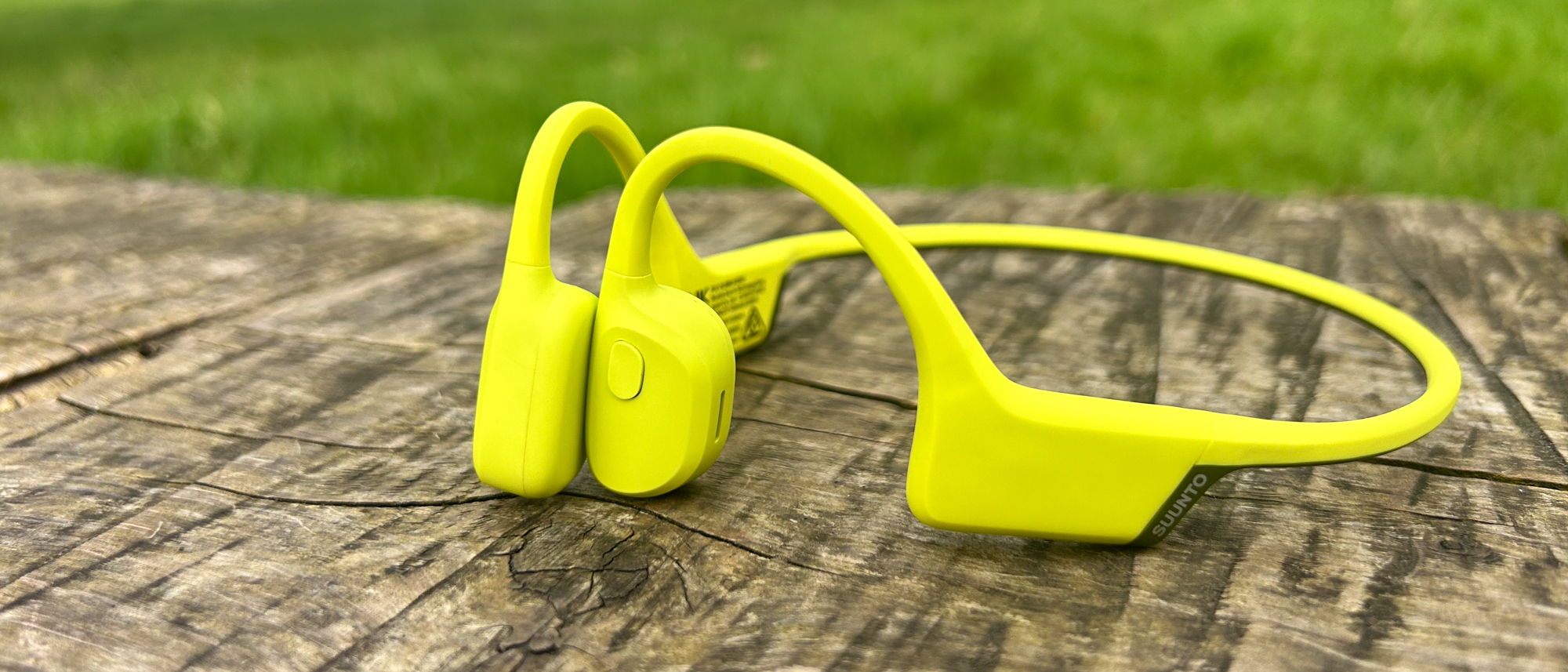Tom's Guide Verdict
The Suunto Sonic retain their predecessor's high-quality sound and are comfortable to wear for hours at a time, but they're hampered by a low water resistance rating and quick-draining battery when in the Outdoor sound mode.
Pros
- +
Comfortable to wear for long periods
- +
Enjoyable open-ear sound
- +
Well-placed physical buttons
Cons
- -
Poor battery performance in Outdoor mode
- -
Clearer-sounding headphones at this price
- -
Excess vibrations at higher volumes
Why you can trust Tom's Guide
Price: $149.99
Colors: Black or Lime
Battery life (rated): 10 hours
Connectivity: Bluetooth 5.2
Durability: IP55
Weight: 1.09 ounces (with charging case)
The Suuno Sonic open-ear bone conduction headphones are designed for when you're working out or playing sports and don't want to block out the world around you completely.
Like many of the best bone conduction headphones, the Sonic uses vibrations on your cheekbones to create the audio, leaving your ears open, so you can still talk to others or hear your surroundings.
This is Suunto’s second set of bone conduction headphones, following the Suunto Wing, and they're cheaper than their more premium sibling, with fewer features, but promising good sound quality, great battery life and a comfortable design. So, how do they stack up against these claims?
Suunto Sonic review: price and availability
The Suunto Sonic cost $149 and are available to buy directly from Suunto’s website and other retailers including Amazon, where they currently remain at that $149 launch price.
At that cost, they're cheaper than the Shokz OpenSwim Pro, which retail for $180, but the Sonic also has fewer features. However, they're slightly more expensive than their closest Shokz equivalent, the OpenRun, which you can pick up for $130.
Suunto Sonic review: Design and comfort
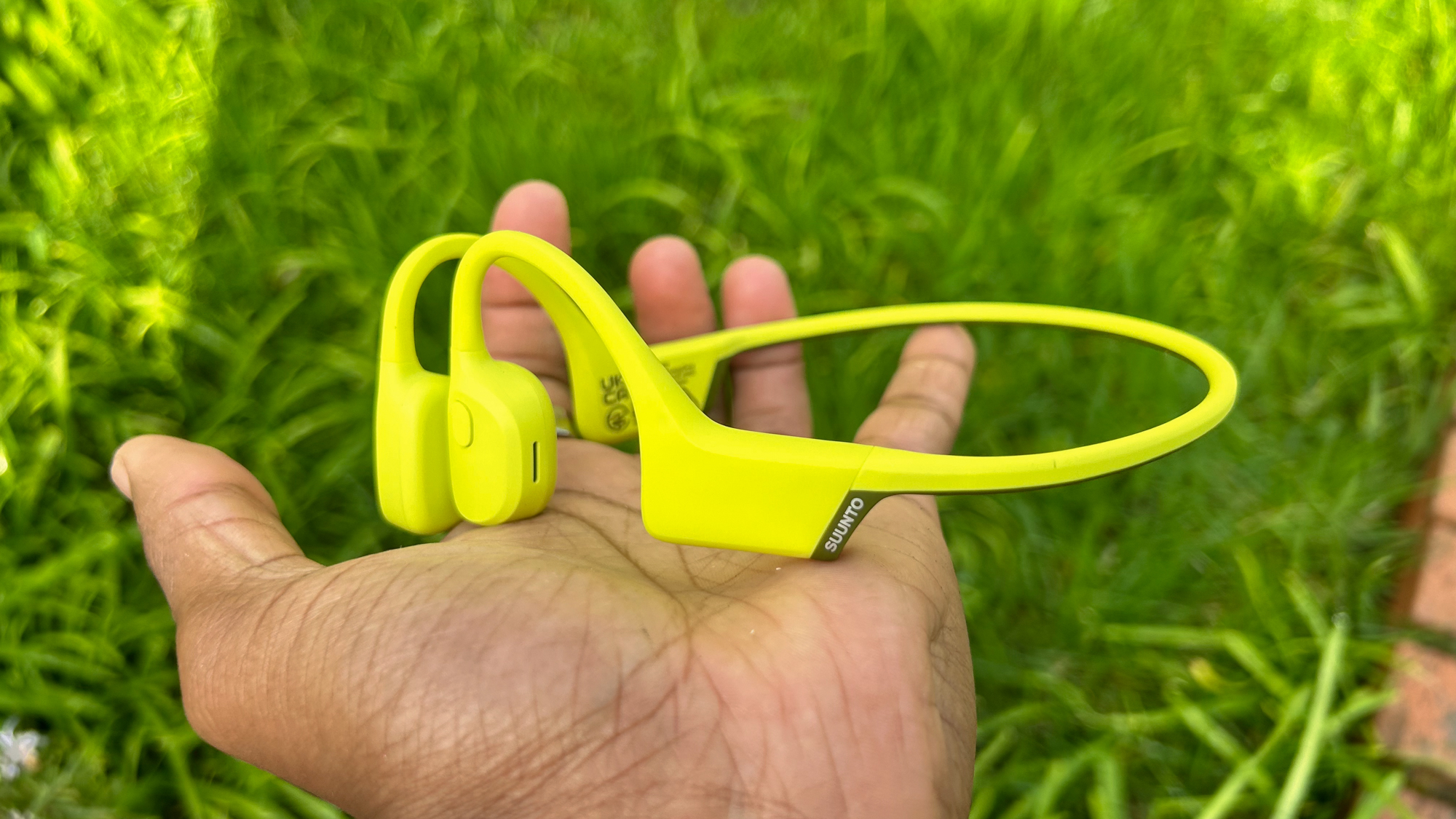
The Sonic's neckband design means they sit on top of your ears with the rest of the frame hovering just above your neck. You can pick them up in black or lime, and both editions use silicon and titanium alloy to keep the design lightweight, durable and comfortable across longer periods.
During testing, I wore them for an hour each time and even did a three-hour marathon training run with the Sonic on. You can still feel them around your head, but even across the longer run, they were comfortable and not cumbersome or bulky.
Despite being designed with runs in mind, the IP55 water resistance rating means they can only handle light rain and sweat, whereas some of the best running headphones can withstand more severe conditions. But, as long as you plan ahead, the Sonic should suit most workouts.
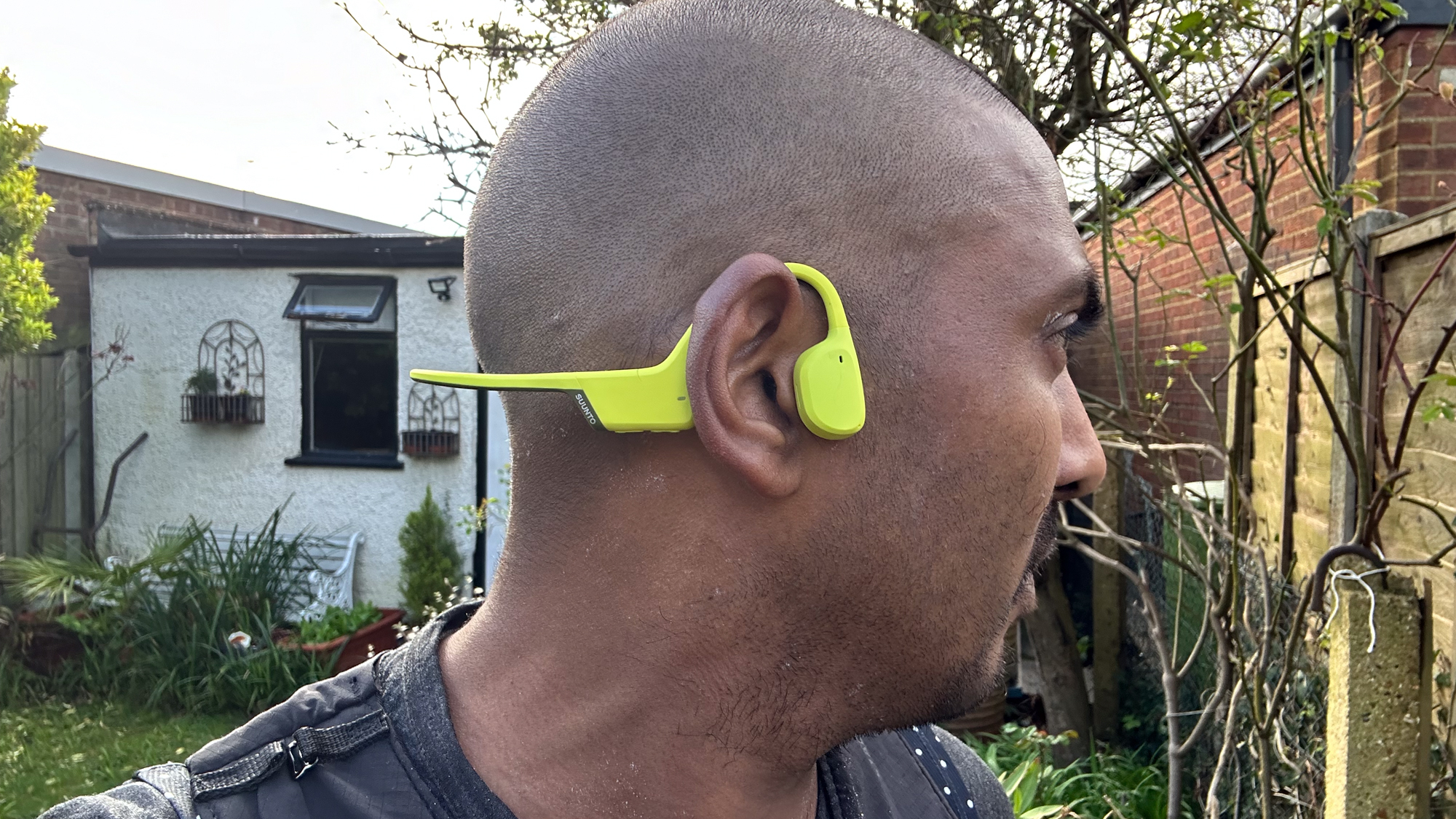
Tucked away on the underside of one of the headphone arms are two physical buttons; one to turn the volume down and the other to turn it up and turn the headphones on. Just above that is a small LED light to indicate pairing and battery level status.
Over the other side is a rounder button that can be used to answer or reject calls, play and pause audio, or skip and back a track through multiple taps. The buttons are ideally positioned to use on the move and not a challenge to locate during more frenetic, sweaty use.
Suunto Sonic review: sound quality
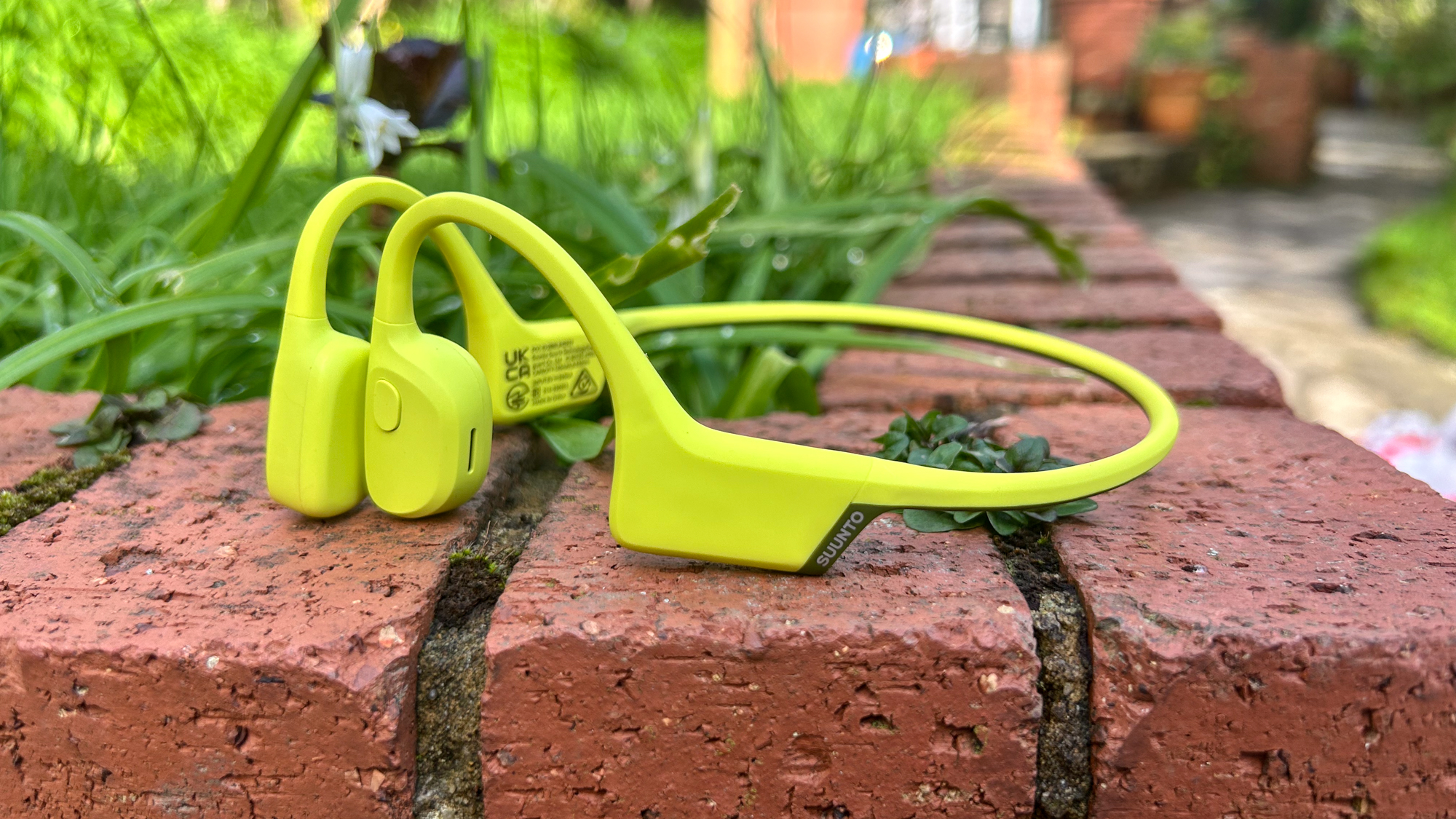
If you've not used bone conduction headphones before, the experience takes some getting used to. Especially since the sound quality you get naturally won't be the same as many of the best workout headphones offer when they're fitted tightly inside your ear.
Suunto offers the choice of two sound presets, which can be selected from the Suunto companion app. This is the same app used to set up the brand's watches, like the Suunto Race, with a dedicated section for pairing headphones found inside the Profile section of the app.
The first of those two sound modes is a default Normal mode that Suunto says offers the most balanced sound most suitable for daily use. So if you’re using them to work at your desk or pretty much when you’re not using them in a workout scenario.
The second mode is an Outdoor mode, which is pretty self-explanatory and is designed to be used when you’re outside and essentially pushes the volume up to help battle more environmental sounds.
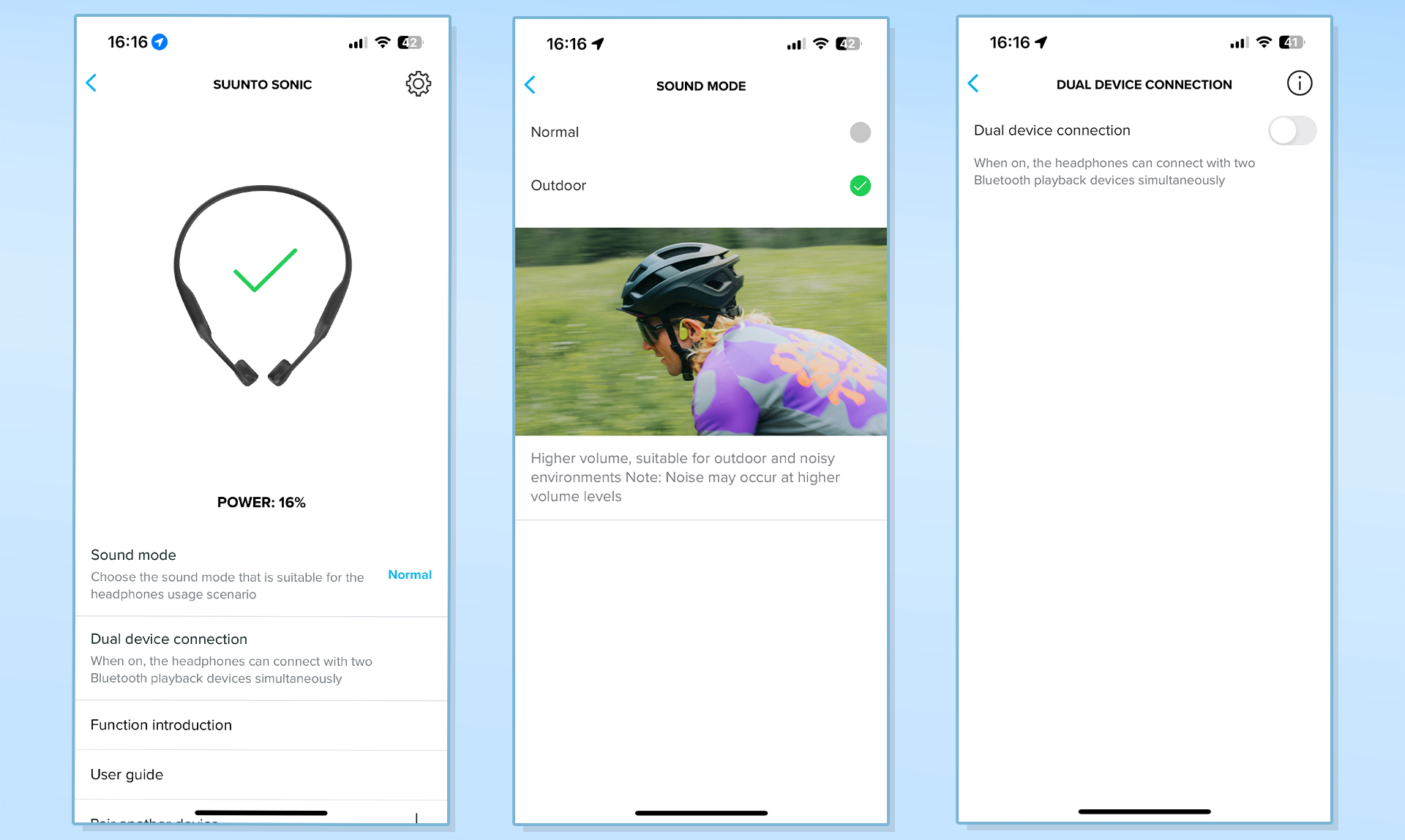
Using the Sonic in Normal mode, there’s some satisfying warmth on tracks like Otis Redding's (Sittin On) the Dock of the Bay and Van Morrison’s Into the Mystic. I wouldn’t say they’re the clearest set headphones I've tested, but they’re also not a muddy mess either, and the sound overall is enjoyable across music genres.
For more bass-heavy tracks like DJ Shadow’s Organ Donor and A Tribe Called Quest’s Can I Kick It, that bass performance is more on the boomy and slightly wooly side and a little more prominent in the mix, though there’s some enjoyable texture.
Listening at louder volumes does introduce some customary bone conduction vibration tickle as those transducers work a little harder. They work well in this Normal mode for listening to podcasts and audiobooks and you will need to switch to the Outdoor mode when you head outside.
That’s because you do need that bump in volume to combat sounds like traffic and wind. I used the Normal mode outside and it didn’t take long to see that it wasn’t going to cut it from a volume point of view.
In either mode, the core experience is the same, but once you switch to Outdoor, your favorite tracks don't get drowned out by wind, traffic noise, or people going about their day.
Suunto Sonic review: battery life
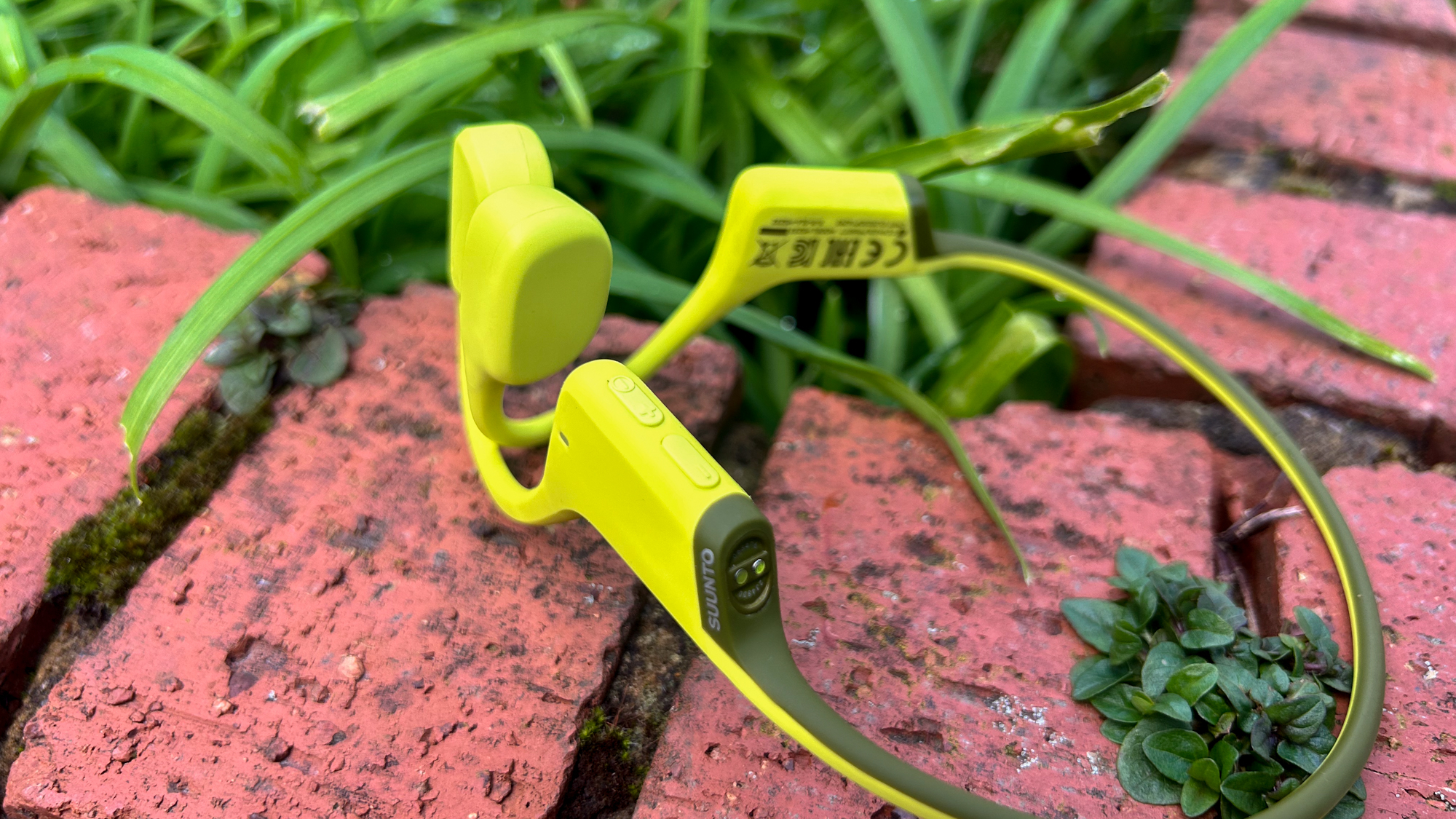
The Sonic promises to deliver up to 10 hours of battery life off a single charge and it uses a proprietary charging cable to power back up, taking less than an hour to go from 0-100% battery.
During our testing, the battery pretty much lived up to its billing. However, it does depend on how loud you’re listening to your audio and which of the listening modes is in use. Typically, an hour of playtime saw battery drop by 10%.
However, while using them for just shy of three hours running at near-top volume while using the Outdoor mode, the battery dropped by 50%, so it can vary quite a lot. Fortunately, there's a 10-minute quick charge that'll top you up for another three hours.
Should you buy the Suunto Sonic headphones?
The Suunto Sonic proved themselves to be a very capable set of bone conduction headphones. They were comfortable to wear, even for extended periods, and the battery life (just about) kept up with my training demands.
The two sound profiles were effective, especially the Outdoor mode, which made it easy to hear your music and surroundings while exercising outside. But if you whack up the volume in this setting, it can quickly drain the battery life.
You don't get a lot of choice in color — the vibrant lime I tested, or a slightly dull-looking black — but the headband design keeps them securely in place. I only wish that the Sonic had the kind of water resistance you'd expect of a set of exercise headphones at this price.
Of course, bone conduction tech won't suit everyone. If you want a similar experience, with your ears free to hear what's going on around you, the Shokz OpenFit Air cost slightly less and sit on top of your ears instead.
Michael is a freelance journalist who has covered consumer technology for over a decade and specializes in wearable and fitness tech. Previously editor of Wareable, he also co-ran the features and reviews sections of T3, and has a long list of bylines in the world of consumer tech sites.
With a focus on fitness trackers, headphones, running wearables, phones, and tablet, he has written for numerous publications including Wired UK, GQ, Men's Fitness, BBC Science Focus, Metro and Stuff, and has appeared on the BBC Travel Show. Michael is a keen swimmer, a runner with a number of marathons under his belt, and is also the co-founder of YouTube channel The Run Testers.
